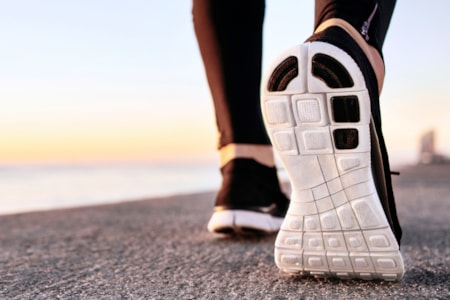
Summer has
finally arrived and during this time of the year, our feet are more exposed. It
is therefore important to protect them against injury, infection and wounds.
But what advice should we follow and for what reasons? The director of the
Department of Physiotherapy, the podiatrist Carmen Belén
Martínez Cepa, analyzes some key elements to take into account.
Shoe type
During the summer and due to the high temperatures, we
often wear sandals and open shoes, making our feet hurt more due to the change
of footwear. Since our feet are less protected, cracks in the heels, papillomas
or plantar warts can appear more often. When choosing the best footwear for summer
we should look for the following characteristics:
- Shoes
should be breathable and open to prevent sweating. Avoid plastic and opt for
more natural materials.
- The
sole of the shoe should be resistant. Thin and flat soles put more stress on
the plantar fascia, calves, and Achilles tendon. This is why a 2-3 cm sole is
recommended for sandals.
- The
shoe needs to have good support to hold the foot, both at the toe and at the
ankle, so that it cushions the step when walking. Laces should be worn, if
possible.
Regarding the use of flip flops, "podiatrists
reject their continued use since due to the lack of support they produce
instability, causing sprains and strains, and even falls if they are of poor
quality", explains Martínez Cepa. This instability is accentuated,
points out the podiatrist, in the case of those sandals that are held on by a
thong between the first and second toes of the foot. “When walking with
flip-flops, steps are shorter and the toes overexert themselves leading to claw
toes, with more tension in the plantar fascia. The functioning of the leg
muscles is also altered in the calves and hamstrings, as well as the Achilles
tendon”, points out the physiotherapist. However, the professor from CEU
USP clarifies, "the use of flip-flops in swimming pools, gyms and
changing rooms is essential to avoid the appearance of fungi".
Mountain routes: hikers and runners
The use of flip-flops is not recommended for long
walks or for running, as they are unstable. However, there are currently hiking
flip-flops with special straps that hold the heel and the instep, providing
stability while walking, and which can be used for running. "You can
even use your usual shoes to run on the beach, being more appropriate to do it
in the firmer area or on the promenade", explains the podiatrist. The
option of running barefoot on the beach is only recommended for runners adapted
to this ground but if this is not the case, it is better to do it progressively
so that the muscles and joints adapt to this terrain, and preferably making the
return route with your feet in the water.
The most common injuries in hikers and runners are
blisters that appear from heat, the use of new shoes or boots, the wrong size
and/or model or type of foot (flat or cavus), and even from the seams of the
sock. To prevent its appearance, the physiotherapist explains, it is important
to hydrate the skin at night with 20-30% urea, and use talcum powder in
footwear or inside the sock. You can also place hydrocolloid patches, apply Vaseline
or "artificial skin" in areas with a high risk of blisters. Other precautions
recommended by Professor Martínez Cepa to avoid these injuries in walkers and
pilgrims are using a suitable insole and technical socks to serve as
reinforcement and expel sweat, changing socks at least once in long stages, ensuring
that the weight of the backpack does not exceed 14% of the pilgrim's weight,
and wearing footwear with cushioning soles.
In the case of other injuries such as subungual
hematomas located on the nails when the toes collide with the inside of the
shoe, these are usually due to an incorrect shoe size. In order to avoid this,
correct lacing of footwear is recommended to avoid excess foot mobility. In the
case of fungi, these can be prevented by applying antifungals after washing,
and changing socks and shoes if you sweat a lot.
The physiotherapist and podiatrist provides some
guidelines to consider:
- Wash
and dry the feet well after a bath or shower, or the swimming pool.
- Apply
sunscreen on the instep and dorsal part of the foot to avoid burns.
- Use
the best urea-based creams to moisturize the skin of the feet on a daily basis,
especially at night, with special attention to the heels to avoid cracks.
- Keep
the nails short and well filed. Don’t overdo nail polishing, and give the nails
a rest from time to time so that they can breathe.
- In
the case of diabetic people, when losing sensibility in the feet, it is very
important to prevent the appearance of wounds that can turn into ulcers that
are difficult to heal. It is essential that these patients regularly inspect
their feet.
- It is
a good idea to visit a podiatrist regularly, or, if this is not possible,
before starting to wear summer shoes.
- In
case of more serious injuries, go to the podiatrist (for subungual hematomas) or
to the physiotherapist (for sprains, strains, contractures, or tendinopathies).
- Alternate
footwear in the summer season, and allow the footwear to ventilate and the sole
to recover.
- If
you go hiking or running, remember to stretch after training and drink enough
water to avoid muscle cramps.